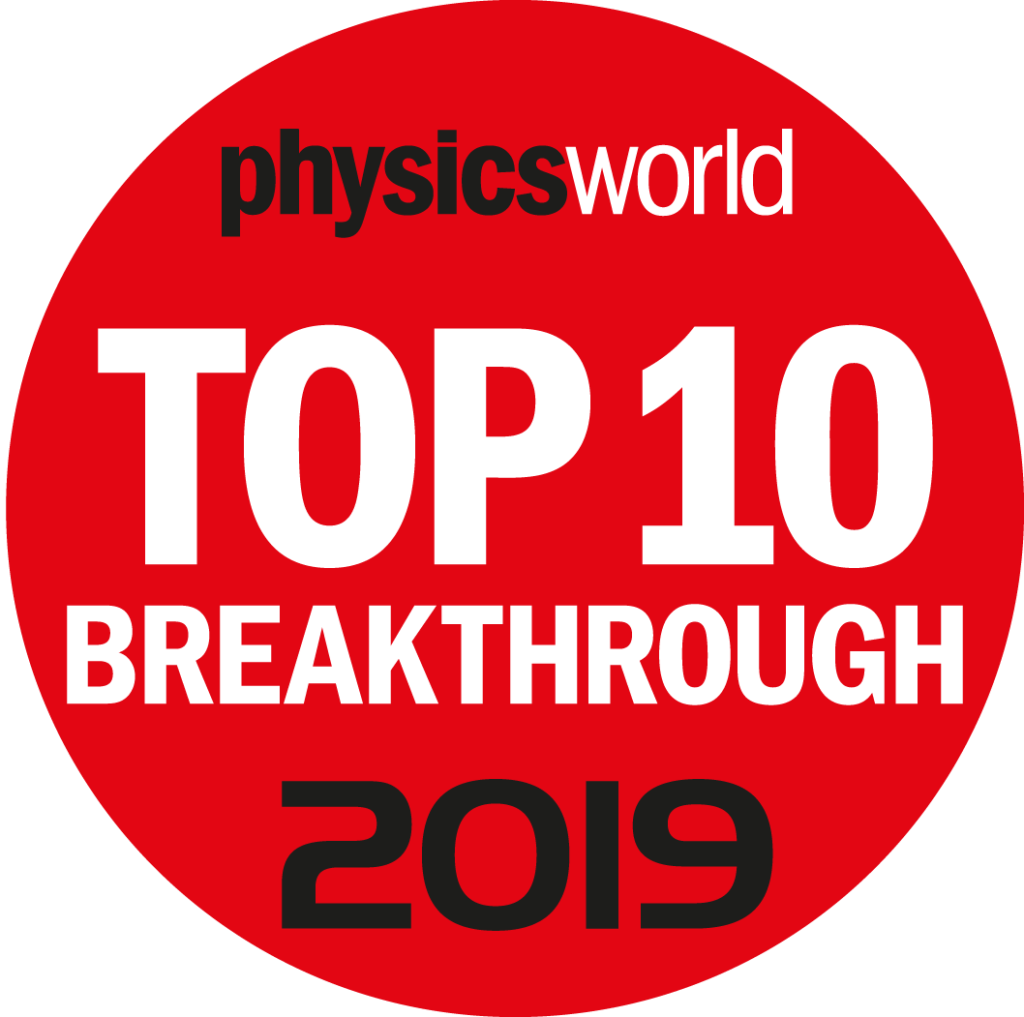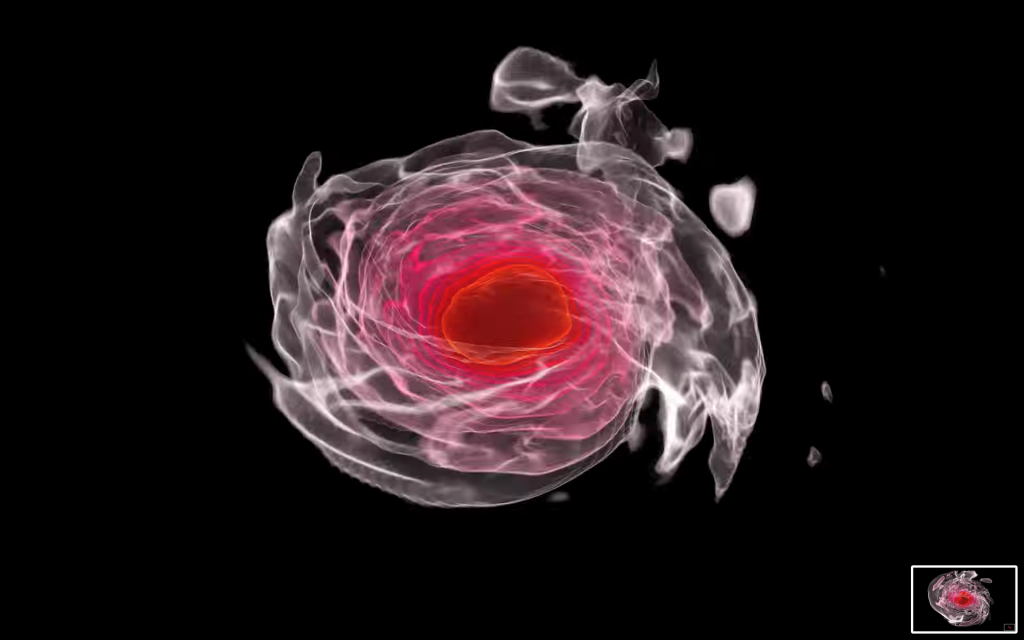2019 at a glance
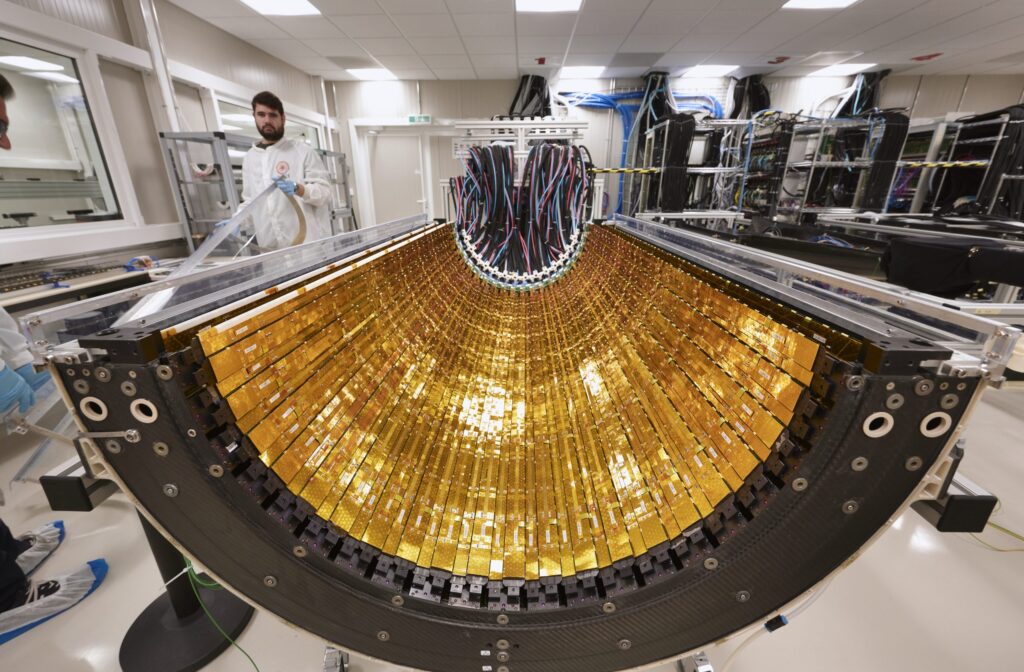
Detector upgrades at CERN
During the current LHC shutdown, Nikhef is involved in the upgrade of the VELO, Outer Tracker and the Trigger/Data Acquisition for LHCb. For ALICE, it concerns the inner tracking system (ITS), that surrounds a new, smaller beam pipe. The ITS uses innovative, compact pixel sensor chips. The capacity of ALICE to pinpoint and reconstruct particle trajectories will dramatically improve.
Upgrades after the shutdown
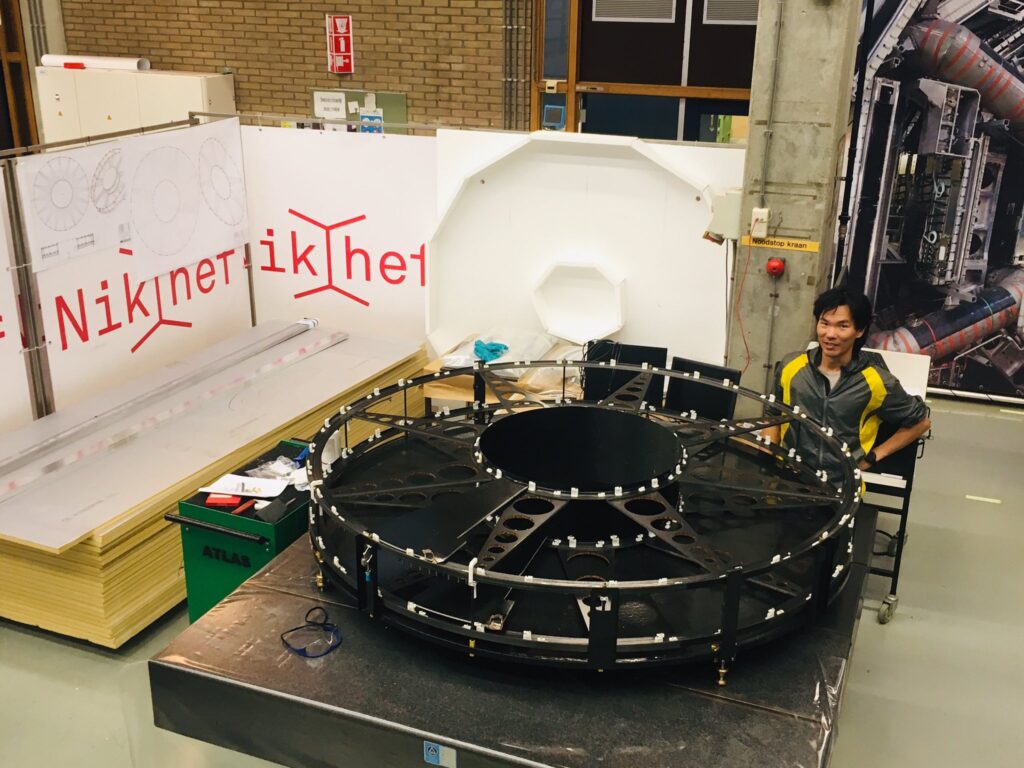
The LHC is planned to restart in 2022 with Run 3. The LS3 shutdown thereafter has been delayed by one year to accommodate the extra time needed by ATLAS and also by CMS to finalize their (Phase-2) upgrades while maximizing the integrated luminosity from Run 3. For ATLAS the Si-Inner Tracker (ITK) is foreseen to be a Phase-2 upgrade. The present inner tracker will be removed, and it will be replaced with an all-silicon tracker that fills the entire existing tracking volume.
Increases in the luminosity of the LHC will require 2-3 times more computing capacity. The HEP Software Foundation, the Worldwide LHC Computing Grid (WLCG) organisation and the LHC experiments are in the process of developing new architectures for data management and processing and new computing models, aimed at the reduction of data volumes and multithreading.
Physics Highlights
From ATLAS this was the observation and measurement of Z boson pair production in vector boson fusion. The LHCb experiment scored a first with the observation of CP violation in the decay of charmed hadrons. This result made it to the ten nominees for the Physics World Breakthrough of the Year. ALICE measured the lifetime of an exotic particle called the hypertriton, whose study may give insight into the interactions occurring in the core of neutron stars.
European Strategy progress
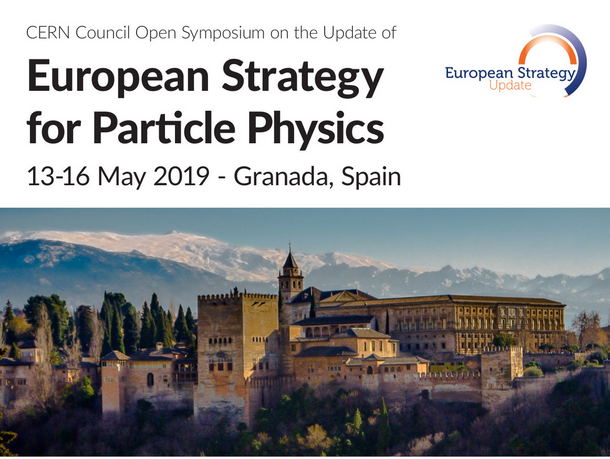
Following the symposium in Granada, the European Strategy Group started finalizing its recommendations for the CERN Council. The Council will examine these recommendations for the strategy update in 2020. For when the LHC comes to an end, broad support emerged in the particle physics community for an electron–positron collider that will explore the Higgs sector in detail, as well as for a high-energy proton–proton collider at CERN. In Europe, the possible options are the Compact Linear Collider and the Future Circular Collider (FCC), while an International Linear Collider (ILC) in Japan and a large Circular Electron–Positron Collider in China are contenders as well. Also considered in the Granada symposium: non-collider experiments, computing, instrumentation and other key aspects of growing importance to the field such as energy efficiency and communication.
KM3NeT
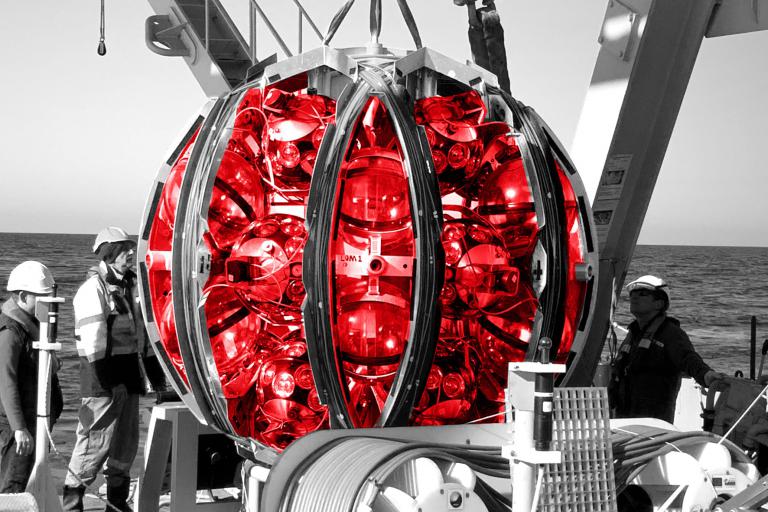
Researchers at the KM3NeT neutrino telescope in the Mediterranean sea have seen neutrinos passing by for the first time. This year, five lines became active and new ones are ready for deployment. Each detector line measures a few hundred meters from the seabed and holds eighteen spheres with light sensors, one above the other.
Pierre Auger Laboratory
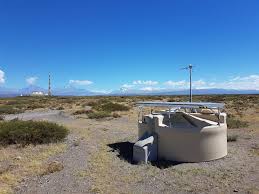
The Scintillating Surface Detector (SSD) is a central component of the AugerPrime upgrade; 1500 of such units are deployed on top of the existing Water Cherenkov Detectors (WCD’s). The Nijmegen group has been leading the mechanical design and has produced nearly 15% of the modules. Moreover, the Netherlands has the leading role in another important part of the upgrade that equips all WCDs with a radio detector unit, that will offer a third layer of independent measurements of the extensive air showers produced by ultra-high-energy cosmic rays.
VIRGO-LIGO
After a period full of repairs and adjustments, the gravitational wave detector Virgo in Italy and the two LIGO detectors in the US started measurements of space-time vibrations from the universe again in March. In total, LIGO and Virgo have measured 42 of those vibrations in 2019, caused by merging black holes and neutron stars, up to hundreds of millions of light years away.
Einstein Telescope in Limburg?

The Nikhef institute collaborates with institutes from 6 other countries to realize an European Einstein Telescope for measuring gravitational waves with extreme sensitivity. Nikhef’s ambition is to achieve together with Belgium and Germany the candidacy of the Netherlands, in South Limburg. According to a first study to a depth of 250m, the Limburg soil seems to be “quiet enough” to accommodate the Einstein Telescope. Regardless of the location of the Einstein Telescope, the Belgian-German-Dutch consortium has decided to build a research facility in Maastricht. This research facility, called ETpathfinder, will develop into an international centre for research into gravity astronomy, high-precision measurement techniques, seismic isolation, measurement and control software, cryogenic technology and (quantum) optics.
Nikhef Collaboration and KNAW/NWO Institute Review
The accession of Maastricht University to the Nikhef collaboration in 2019 meant a strengthening of the national partnership, in particular in the field of gravitational wave physics but also in that of LHCb.
A KNAW/NWO Committee has evaluated the landscape of Dutch scientific institutes. A pleasing conclusion was that according to this committee, Nikhef can be an example for other institutions when it comes to connecting a scientific field and offering national added value.
Renovation Nikhef Institute
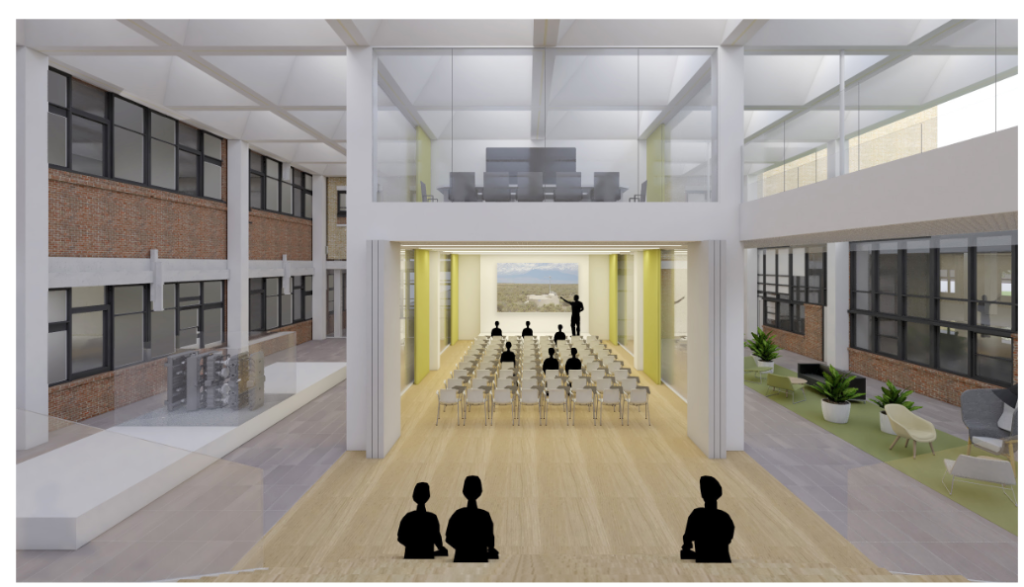
A team from JHK Architects, Deerns and Aronsohn has been selected to work out a design to make the building in Amsterdam future-proof. Project managers from Brink Management / Advies will steer the whole process. According to the planning, the renovation work will start in 2021.
To illustrate Nikhef’s present durability efforts; the datacenter at Nikhef started providing residual heat for another 720 building units in the immediate neighbourhood of Nikhef.
